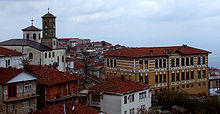
Bitola is a city in the southwestern part of North Macedonia. It is located in the southern part of the Pelagonia valley, surrounded by the Baba, Nidže, and Kajmakčalan mountain ranges, 14 kilometres north of the Medžitlija-Níki border crossing with Greece. The city stands at an important junction connecting the south of the Adriatic Sea region with the Aegean Sea and Central Europe, and it is an administrative, cultural, industrial, commercial, and educational centre. It has been known since the Ottoman period as the "City of Consuls", since many European countries had consulates in Bitola.

North Macedonia is a country situated in southeastern Europe with geographic coordinates 41°50′N22°00′E, bordering Kosovo and Serbia to the north, Bulgaria to the east, Greece to the south and Albania to the west. The country is part of the wider region of Macedonia and makes up most of Vardar Macedonia. The country is a major transportation corridor from Western and Central Europe to Southern Europe and the Aegean Sea. North Macedonia is a landlocked country but has three major natural lakes: Lake Ohrid, Lake Prespa and Lake Dojran. It has a water area of 857 km2, while its land area is 24,856 km2.
The following is a summary of the transport system of the Republic of North Macedonia.

The Vardar Banovina, or Vardar Banate, was a province (banate) of the Kingdom of Yugoslavia between 1929 and 1941.
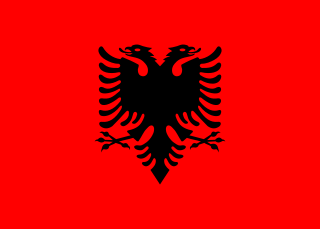
Albanians in North Macedonia are the second largest ethnic group in North Macedonia, forming 446,245 individuals or 24.3% of the resident population. Of the 2,097,319 total population in the 2021 census, 619,187 or 29.52% are Albanians.

The municipalities are the first-order administrative divisions of North Macedonia.

Baba, also known by the name of its highest peak, Pelister, is a mountain in North Macedonia. The Pelister peak overlooks the city of Bitola. Baba is the third highest mountain in North Macedonia. Other peaks besides Pelister are Dva Groba, Veternica, Musa, Ržana, Široka, Kozji Kamen, Griva and Golema Čuka in North Macedonia, and Belavoda, Kirko. The Baba massif splits up the rivers in the region, so that they either flow towards the Adriatic.
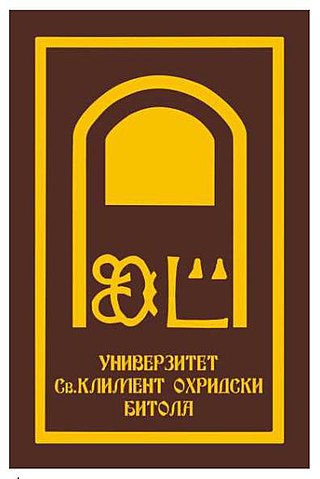
The University St. Kliment Ohridski in Bitola is a public university in North Macedonia. Headquartered in Bitola, it also has faculties in Prilep, Ohrid, Veles, Kichevo and Skopje. It was founded on 25 April 1979, but the name of St. Clement of Ohrid was not given until late 1994. As of 2018–19 school year, a total of 4,139 students are enrolled at the university.

The motorways in North Macedonia are called avtopat and the name, like its translation in most languages, simply means auto road.

The following outline is provided as an overview of and topical guide to North Macedonia:
The Western Macedonian dialects are one of three groups of Macedonian. The group is located in the western and southwestern areas of North Macedonia and smaller parts in Mala Prespa and Golo Brdo, in Albania, and the Florina regional unit, in Greece. The group of Western Macedonian dialects is divided into two subgroups: the central group and the western and northwestern group.
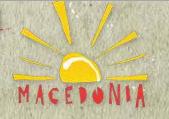
Macedonia Timeless is a series of promotional tourist videos about the Republic of North Macedonia. The videos showcase scenery from the Balkan country and its culture to a foreign audience. Each video of the project is the work of a private production company, carried out on behalf of the government of North Macedonia, which officially funds the effort. The purpose of the project as it is defined is "to promote awareness of Macedonian tourism opportunities".

Antenna 5 Radio Network is a number 1 hits radio station in North Macedonia.
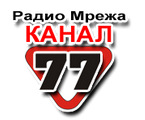
Radio Kanal 77 is a private national radio station broadcasting in North Macedonia, with its headquarters located in Štip, and studios located in Skopje and Bitola. It started broadcasting in 1991, and since then it is one of the most listened radios in North Macedonia. Kanal 77 is broadcasting on 89.7 FM in Skopje, 106.0 FM and 103.2 FM in Bitola, 104.1 FM in Prilep, 105.4 FM in Ohrid, 101.9 FM in Tetovo and Gostivar, 103.8 FM in Štip, 101.8 FM Radoviš, 102.9 FM in Strumica.
North Macedonia was part of the Ottoman Empire for over 500 years, from the late 14th century until the Treaty of Bucharest in 1913. Before its conquest, this area was divided between various Serbian feudal principalities. Later, it became part of the Ottoman province or Eyalet of Rumelia. The name Rumelia means "Land of the Romans" in Turkish, referring to the lands conquered by the Ottoman Turks from the Byzantine Empire.
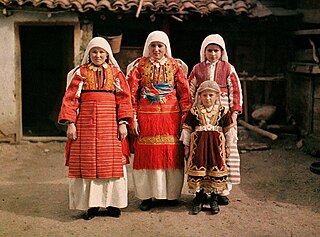
Macedonian national costumes are part of the material culture of the Macedonian people and they are an important branch of the Macedonian folk art.
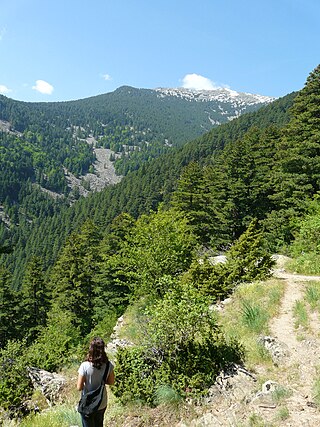
Pelister National Park is a national park in the Municipality of Bitola, North Macedonia. The park is located in the Baba Mountain massif and covers an area of 171.5 square kilometres (66.2 sq mi). The altitude of the park varies between 927 and 2,601 m above sea level and is filled with exquisite flora and fauna. Among flora elements, the presence is especially significant of the five-needle pine molica, Pinus peuce - a unique species of Cenozoic age being present on only a few mountains in the Balkan Peninsula. The beauty of the landscape is enhanced by the diverse wildlife: bears, roe deer, wolves, chamois, deer, wild boars, rabbits, several species of eagles, partridges, red-billed choughs, and the endemic Macedonian Pelagonia trout.

Ohrid-Prespa Transboundary Biosphere Reserve is a biosphere reserve encompassing the area of Lake Ohrid and Lake Prespa, on North Macedonia and Albania.
The COVID-19 pandemic in North Macedonia was a part of the ongoing worldwide pandemic of coronavirus disease 2019 caused by severe acute respiratory syndrome coronavirus 2. The virus was confirmed to have reached North Macedonia in February 2020. The initial contagion in the country was mainly connected with the COVID-19 pandemic in Italy as there are circa 70,000 residents of Italy from North Macedonia and resulted in many people returning to North Macedonia, bringing the virus with them. As of 9 July, over 7,000 cases have been confirmed in the country, due to its second wave caused by family reunions during Eid al-Fitr among the Muslim minority and the overall re-opening of the country to organize the parliamentary elections.






